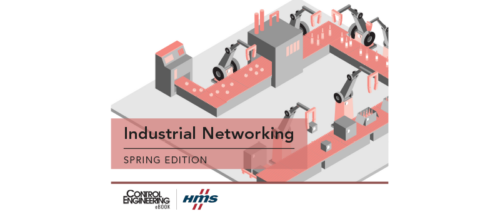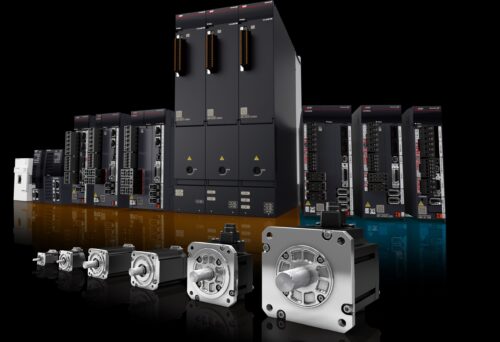Strategy and standards help determine Big Data, IIoT value
Cover Story: There are many tools for capturing the potential value Big Data and the Industrial Internet of Things (IIoT) provide, but companies need to know what kind of information they want and how to gather it securely.
Companies that want to capitalize on Big Data and the Industrial Internet of Things (IIoT) are trying to unlock and harness the value from the data they are gathering. However, as the old saying goes, "one man’s trash is another man’s treasure," and that is true in terms of machine and production data. A machine builder’s Big Data priorities may be very different from the information an end user manufacturer desires.
The first steps required for determining the data types necessary for each application are identifying the key business and production challenges IIoT technology should address. After that, a plan must be created to store and analyze data to generate insights that will help support continuous improvement efforts within a company’s operations.
On the end user side, this may include a wide range of information types—including categories such as direct, indirect, or derived data—depending on the established goals. Direct or "raw" data such as field sensor information is unfiltered and often hasn’t been converted into engineering units. Indirect data, such as motor temperature or vibration data, might be filtered. Derived data, which comes from data acquisition and subsequent calculations, include metrics such as overall equipment effectiveness (OEE).
Data priorities for end users, machine builders
Most often, the end user seeks optimization of throughput and overall plant effectiveness by comparing production lines across the enterprise or streamlining operations via supply chain management (SCM) initiatives. These efforts are designed to enable the company to make positive changes such as shifting production runs to maximize throughput and product variety. Another strategy could involve implementing future-oriented concepts such as dynamic production allocation and object-oriented manufacturing where the IoT-enabled plant can autonomously move production steps based on machine line/module availability or other factors.
Machine builders have a different focus and priority with Big Data. They use data to enhance machine performance or predictive maintenance services. They dive deep into the details of an individual machine’s operation through analytics software. Analytics tools assist in creating data models that help machine builders determine ideal machine operation variables and identify possible areas of improvement in terms of mechanical, electronic, and software components.
Data analytics benefits
New analytics solutions provide a wealth of features that are designed to provide the perfect mix of high-performance and cost-effective operation. For example, high-level analytics software running on a PC-based control platform logs data cyclically. It leverages the speed of modern industrial Ethernet protocols to gather machine data in real time during every programmable logic controller (PLC) cycle. The data may include motion system performance, maximum torque, motor temperature, and machine state timing.
The collected data can be used to help drive decisions on machine component specifications to remedy any perceived areas of weakness. Machine builders often require aggregated metadata to accompany the "regular" data as a means to correlate the many variables involved in machine optimization. For example, machine operating temperatures may be tracked over a long period of time and the accompanying metadata may be used to reveal the overall state of the machine when temperature spikes or dips occur.
Established Big Data, IoT standards and protocols
Data structures and standards are important for assuring industry conformance and represent that important first step towards regulated data acquisition and transmission methods. As IoT and cloud technologies continue to make inroads into industrial markets, data and protocol standardization efforts will become important forces behind conformance and interoperability. Working groups such as the OPC Foundation have highlighted the need for improved data acquisition and transmission in higher-level systems while maintaining defined data structures and data access rights.
More companies also are using established IoT protocols to transmit data to the dashboards of plant engineering staff and decision makers. These protocols are designed to define the data transports mechanism, which is a channel where the data can be moved to a local database or in a public or private cloud. The format of the recorded date is not defined by the protocol, which allows it to be packaged in a neutral format, such as java string object notation (JSON), or in a compact format such as binary. This data-interchange format is easy for industrial controls to understand and it enables interoperability for many cloud platforms, middle layer software, and analytics packages on the market.
Standardized data formats represent another important step toward the convergence of information technology (IT) and automation. It also assures that industrial devices present all data in a widely usable format that can be parsed to find the data’s real value. Regardless of a company’s priorities and focus, there are hardware and software tools available to help generate more actionable data to improve production.
Daymon Thompson, automation product specialist, Beckhoff Automation. Edited by Chris Vavra, production editor, Control Engineering, cvavra@cfemedia.com.
MORE ADVICE
Key Concepts
- Companies need to have a specific strategy before they try to harness value from Big Data and the Industrial Internet of Things (IIoT).
- Machine builders and end users have very different goals with Big Data and the IIoT, and companies need to account for that.
- Standardized data formats are bringing IT and automation closer together.
Consider this
What else should companies consider when looking to derive information from Big Data or the IIoT?
Do you have experience and expertise with the topics mentioned in this content? You should consider contributing to our CFE Media editorial team and getting the recognition you and your company deserve. Click here to start this process.




